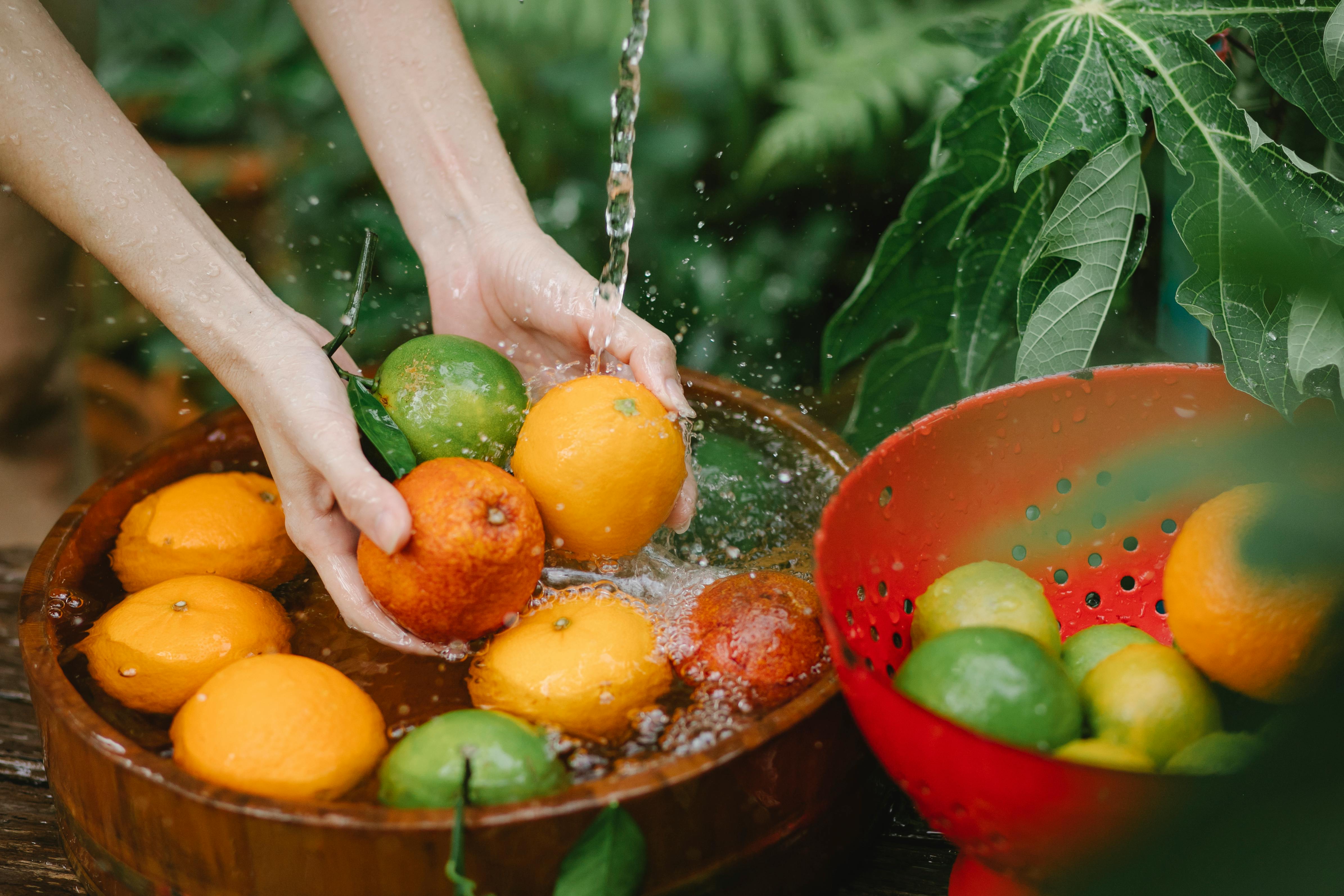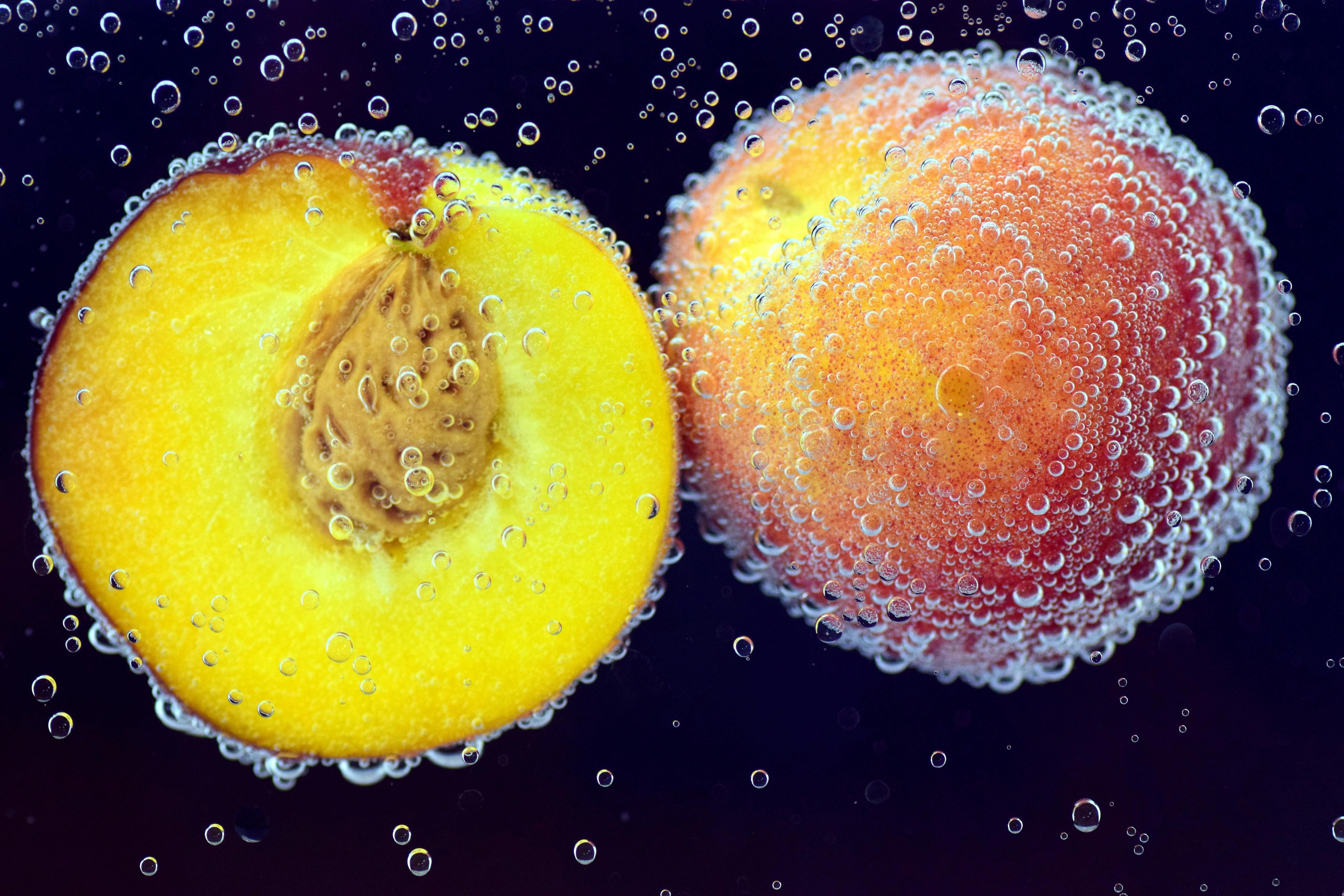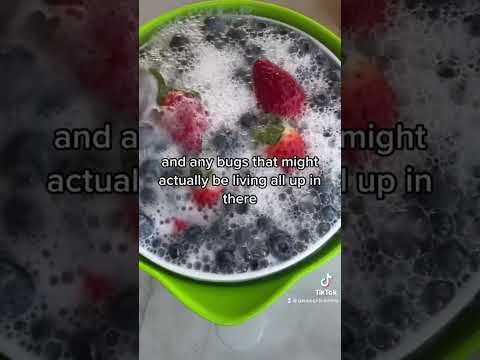Fruit is a great source of vitamins and minerals, but it can also get contaminated with dirt and bacteria. Cleaning your fruit with baking soda and water is a simple way to help keep it healthy and safe to eat. Baking soda is a natural disinfectant that can kill bacteria on the surface of fruits such as apples, pears, oranges, and more. In this guide, we will discuss how to clean fruit with baking soda and water so that you can enjoy your favorite snacks without worrying about food safety.The benefits of cleaning fruit with baking soda and water include removing potentially harmful pesticides, reducing bacteria levels, and improving the overall flavor of the fruit. Baking soda is a natural disinfectant that works by absorbing dirt, grease, and oils while also neutralizing odors. When combined with warm water, it forms a solution that can be used to clean fruits like apples, pears, cherries, and oranges. This solution helps to remove pesticide residue from the surface of the fruit while also killing any bacteria present on it. Additionally, the baking soda and water mixture can help to enhance the flavor of the fruit by neutralizing any sour flavors that may be present.
How to Prepare Baking Soda Mixture for Cleaning Fruit
Cleaning the fruits before eating them is essential for getting rid of contaminants and bacteria. One of the most effective methods to clean fruit is using a baking soda mixture. Baking soda is alkaline in nature and hence helps to break down dirt, wax, and other residues from the surface of fruits. Here’s how you can prepare a baking soda mixture for cleaning fruit:
Firstly, take 2 litres of lukewarm water in a bowl or container. Add 4 tablespoons of baking soda into it and mix until it is completely dissolved. The solution should have a soapy texture and should be able to form bubbles when agitated.
Next, take the fruits that need cleaning and place them in the solution. Make sure that all sides are thoroughly immersed in the solution. Let them soak for about 10-15 minutes so that all contaminants can be effectively removed.
After soaking, take out the fruits from the solution and rinse them under running tap water. This will help to wash off any remaining residues from the surface. Lastly, dry off the fruits with a clean towel or tissue paper before consuming or storing them away.
Using this simple baking soda mixture is an effective way to clean your fruits before eating or storing them away. It helps to keep your food safe by removing bacteria and other contaminants from its surface without affecting its nutritional value.
Removing Wax From Fruits
Removing wax from fruits can be a tricky and time-consuming task. Wax is often used to give fruits a glossy look, but it can also make it difficult to tell if the fruit is fresh or not. Fortunately, there are a few tips that you can use to help you remove wax from fruits quickly and easily.
First, it’s important to understand that not all waxes are the same. Some are more difficult to remove than others, so it’s important to read the label on the package or ask your grocery store for more information about the type of wax used on the fruit you’re buying.
Once you’ve identified the type of wax on your fruit, it’s time to start removing it. The simplest way to do this is by washing the fruit with warm water and a mild detergent or dish soap. This will help break down and loosen any wax that may be present on the surface of the fruit.
If this doesn’t work, you may need to try using some rubbing alcohol or white vinegar mixed with water. These solutions should be applied directly onto the surface of the fruit and then gently rubbed off with a clean cloth or sponge. Make sure not to scrub too hard as this could damage or bruise the skin of the fruit.
Another option is to place your fruits in a large bowl filled with hot water for 10 minutes or so. This will help dissolve any remaining wax and make it easier for you to remove it from the surface of your fruits. Once removed, rinse off any remaining residue before eating or storing your fruits in an airtight container.
Finally, you may want to consider using a specialized food grade wax remover if all else fails. These products are designed specifically for removing wax from fruits and other foods, so they should be safe for consumption after use. Just make sure to read and follow all directions carefully before using them on your produce!
By following these tips, you should have no trouble removing wax from your fruits quickly and easily!
Cleaning Fruits with Baking Soda and Water
Fruits are a healthy and delicious part of any diet, but it is important to clean them properly before eating. Baking soda and water is an effective way to clean fruits and vegetables, as it can help to remove dirt, bacteria, and other contaminants. To ensure safe consumption, there are a few safety guidelines that should be followed when cleaning fruits with baking soda and water.
First, wash your hands thoroughly before handling any produce. This helps to reduce the risk of cross-contamination and transfer of bacteria from your hands to the food.
Second, use cold water when washing fruits with baking soda. Hot water can cause the skin of the fruit or vegetable to become soft and make it more difficult for contaminants to be removed. Cold water also helps keep the natural flavor and nutrients intact.
Third, mix baking soda with cold water in a bowl or sink. Use about one teaspoon of baking soda for every cup of cold water used. Gently swish the fruit or vegetable in the solution for a few minutes before rinsing with cold running water.
Finally, discard any produce that appears overly bruised, discolored, or shows signs of mold or decay before consuming it. It is also important to discard any remaining baking soda solution after use as this may contain bacteria that could be transferred onto other fruits or vegetables if reused.
By following these safety guidelines when cleaning fruits with baking soda and water, you can help ensure that they are safe for consumption.
Deep Clean the Fruits using Baking Soda and Water
It is important to keep your fruits clean and healthy, especially before you eat them. Baking soda and water can be used to deep clean your fruits so that you can make sure they are free of bacteria and other contaminants. Here are the steps to follow for deep cleaning your fruits with baking soda and water:
1. Rinse the fruit with cold, running water: Start by thoroughly rinsing the fruit with cold, running water. This will help remove any dirt or debris that may be on the surface of the fruit.
2. Make a baking soda solution: In a bowl or bucket, mix together one tablespoon of baking soda with two cups of warm water. Stir until the baking soda is fully dissolved in the water.
3. Soak the fruit in baking soda solution: Place the fruit in the baking soda solution and let it soak for 10-15 minutes. This will help remove any bacteria or contaminants that may be on the surface of the fruit.
4. Rinse again with cold, running water: After soaking, rinse off the fruit with cold, running water to remove any residue from the baking soda solution.
5. Dry off: Finally, dry off your fruits with a clean paper towel or cloth towel before eating or storing them away in your refrigerator.

Types of Fruits Suitable for Cleaning with Baking Soda and Water
Cleaning fruits with baking soda and water is a great way to get rid of any unwanted bacteria or dirt that may be on the surface. It also helps to remove any wax that has been used to make the fruit look more appealing. While all fruits can benefit from a good cleaning with this method, some are better suited than others. Apples, pears, strawberries, and peaches are all excellent choices for cleaning with baking soda and water.
Apples are a great fruit for cleaning with baking soda and water because their thin skin allows the mixture to penetrate deeply into the fruit. This helps to remove any bacteria or dirt that may be hiding in the crevices of the apple’s skin. Pears are also an excellent choice for this method because their thick skin helps to keep moisture out while still allowing the baking soda mixture to clean deeply.
Strawberries can also benefit from being cleaned with baking soda and water due to their soft flesh. The mixture will help to draw out any dirt or bacteria that may be hiding in the crevices of the strawberry’s skin, as well as help remove any wax that may have been used on them. Peaches are another great choice for using this method of cleaning because their thin skin allows for deep penetration of the mixture into their flesh.
Cleaning fruits with baking soda and water can be an effective way to ensure that you are consuming clean fruits that are free from bacteria or dirt. By choosing apples, pears, strawberries, and peaches you can be certain that you are getting a deep clean without having to worry about damaging the delicate skin of these fruits.
Rinse off the Fruits
It is important to rinse off the fruits before cleaning them with baking soda and water. This helps to remove any dirt or debris that may have accumulated on the surface of the fruit. To do this, simply fill a large bowl with cold water and a few drops of dish soap, then place the fruits in the bowl and let them soak for a few minutes. Once they are done soaking, rinse them off with clean water and pat them dry with a clean cloth or paper towel. This will ensure that all dirt and debris is removed before cleaning with baking soda and water.
Mix Baking Soda & Water
Once the fruits have been rinsed off, it is time to mix together baking soda and water in order to create a cleaning solution. To do this, combine one teaspoon of baking soda with one cup of warm water in a large bowl. Stir until all of the baking soda has dissolved into the water. This solution can then be used to clean any fruits that need extra attention.
Soak Fruits in Baking Soda Solution
Once you have prepared the baking soda solution, it is time to soak your fruits in it. Place all of your fruits into the mixture and let them sit for at least 10 minutes, or longer if necessary. The baking soda will work its magic to help break down stubborn dirt and debris from the surface of your fruits.
Rinse & Dry Fruits
After your fruits have been soaked in the baking soda solution for an appropriate amount of time, it is time to rinse them off with clean water. Make sure all residue from the baking soda has been thoroughly removed before drying them off with a clean cloth or paper towel. This will ensure that your fruits are sparkling clean and ready for consumption!
Additional Tips to Enhance Efficiency
In addition to rinsing, mixing baking soda & water, soaking in solution, and rinsing & drying fruits there are some additional tips you can use to enhance efficiency when cleaning fruit with baking soda and water:
– Use more than one bowl if necessary – If cleaning more than one type of fruit (e.g., apples + oranges), use separate bowls so that each type can be soaked without mixing different types together
– Change out solution – If you are cleaning multiple batches of fruit over time, make sure you change out your solution every so often so that it remains fresh and effective
– Let sit longer – It’s okay (and sometimes beneficial) to let your fruit sit longer than 10 minutes – just make sure not to leave it soaking too long as this can cause over-softening
Using Too Much Baking Soda
One of the most common mistakes people make when cleaning fruits with baking soda and water is using too much baking soda. Baking soda is an effective cleaning agent, but it can also be abrasive. Using too much baking soda can damage the delicate skin of some fruits, leaving them with a rough texture and an unpleasant taste. It’s best to use only a small amount of baking soda in the cleaning solution – no more than a teaspoon for every liter of water.
Forgetting to Rinse Thoroughly
Another mistake to avoid when cleaning fruits with baking soda and water is forgetting to rinse thoroughly. Baking soda is a great way to remove dirt and debris from fruits, but it can also leave behind a chalky residue if not rinsed properly. To get rid of any leftover baking soda, be sure to rinse the fruit thoroughly under running water before eating or cooking with it.
Not Taking into Account Fruit Quality
Another mistake people often make when cleaning fruits with baking soda and water is not taking into account the quality of the fruit. If you’re using old or overripe fruit, it’s best not to use baking soda at all, as this could cause the fruit to become mushy or discolored. For fresher fruits, however, gentle scrubbing with a soft brush and warm water should be sufficient for removing most dirt and debris without damaging the skin or affecting flavor.

Conclusion
Fruits are an essential part of a healthy diet. However, it is important to keep them clean and free from bacteria and contaminants. Baking soda and water is an effective and inexpensive way to clean fruit. It is also safe for the environment and will not introduce any additional chemicals into the food.
When cleaning fruit with baking soda, it is important to use cold water and a soft brush or cloth. Be sure to rinse the fruit thoroughly before eating or cooking it, as baking soda can leave a residue. With regular cleaning, you can be sure that your fruits are safe to eat.



